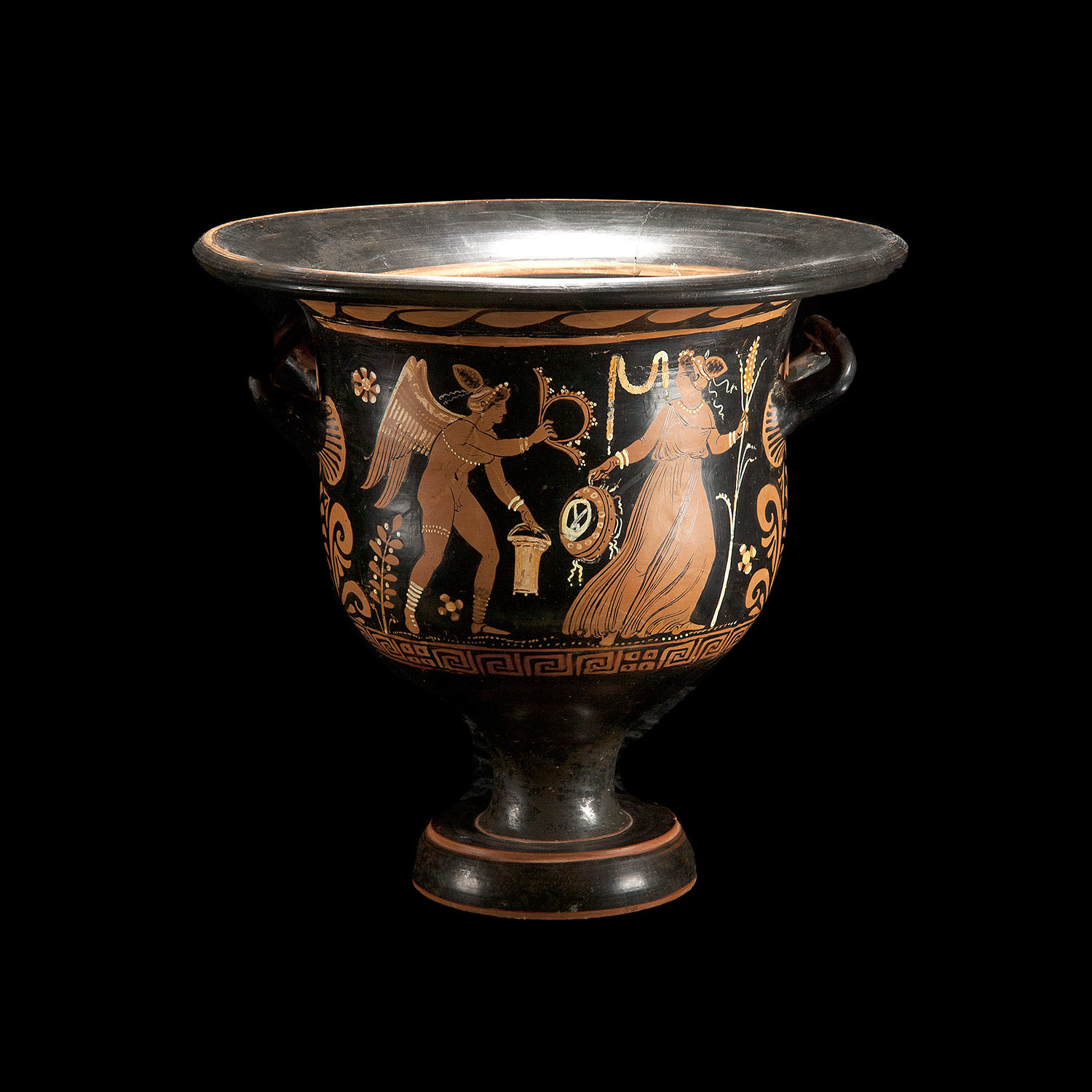cybershark5886 said:
However I've read in more than one place that the DH is based on a misunderstanding of ANE literature.
This is argued by virtually all opponents of the DH. Since you've been reading anti-DH material, no doubt you've read it in more than one place. But claims are one thing. Proof is another...
As for the reviews themselves, ad hominem arguments against who wrote them are equally meaningless if you don't evaluate the actual argument.
There's a difference between blatant
ad hominem and negative
criticism.
Whoa there, something is definitely getting confused here. I don't understand your argument. Assuming for the moment that the three examples were valid and they had doublets, each story by itself would indeed have that double. While it seems like you are saying that they borrowed from one another (and that very well may be), but then seem to conclude that since they borrow from one another that instead of 3 doublets you have one that is recycled (which doesn't change the fact that it's in 3 different places). But infact it still attests to 3 separate examples of doublets in ans of themselves (whether related or not).
No, you're not understanding me. Each story is a separate myth (although it is a well-known that the Gilgamesh Epic is a version of the Atrahasis Epic).
But firstly, let's define a 'doublet'. A doublet is simply the name for two versions of a story that relay that same story in only minutely different ways. You've misunderstood your sources because you believe each individual story--(i) the Atrahasis Epic, (ii) the Gilgamesh Epic, and (iii) the Enki and Nintur myth--contain creation doublets within themselves; i.e., that the Atrahasis Epic contains two versions of creation, that the Gilgamesh Epic contains two versions of creation, and that the Enki and Nintur myth contains two versions of creation (a total of six creation stories). That's
not what your sources are saying (except for the one from christian-thinktank for the Enki and Nintur myth, but for that see further below).
I'm saying that each of the three myth examples contain only
one version of the creation of man each...a total of
three stories. Your quoted your source from the
The Biblical Archaeologist (the article by Tikva Frymer-Kensky) as saying:
"In the creation of Enkidu in the Gilgamesh Epic, long recognized as a doublet to the creation of man..."
This is not saying that the Gilgamesh Epic contains two creation of man stories. This is saying that the creation of Enkidu in the Gilgamesh Epic is reworked from
other stories in other myths...in this case, the Atrahasis Epic. In the Atrahasis myth, man is created as a substitute work force for the lesser gods (as is the case in the Enki and Nintur myth which is based on the same tradition). There is only
one creation story in each myth, which resemble each other. In Genesis, there
are two creation stories. In each of the three above listed stories, there are
not. Each of the above listed stories have only
one, but they share commonalities with each other and thus each account of man's creation in each story is called a 'doublet' to another version of the story in the other myths.
In order for this to be 'evidence' against the DH, you have to show that each version of the creation of man in each myth (
one creation per myth, unlike Genesis which has
two creations of man) was part of an original literary work composed by a singular author.
Do you get what I'm saying?
It's this:
Atrahasis Epic = 1 creation of man story (humans created to take place of lesser gods)
Enki and Nintur myth = 1 creation of man story (humans created to take place of lesser gods)
Gilgamesh Epic = 1 creation of man story (the creation of the man Enkidu, which seems to be a rehash of the above older creation of man stories, and thus is called a 'doublet')
Not:
Atrahasis Epic = 2 creations of man stories
Gilgamesh Epic = 2 creations of man stories
Enki and Nintur myth = 2 creations of man stories
Now if we were to draw conclusions from this, imagine this scenario: The initial story is compiled by "many hands" and contains a doublet (and not necessarily one of contradictory explanations - that's another argument), a later story pulls off of this one (but is written by one single person who incorporated the "multiple traditions" as a doublet or even triplet - however many there were) yet was only reporting the traditions as handed down and didn't want to exclude it. The first can be accused as having multiple authorship, but the second, third, fourth, etc. if only pulling on the previous tradition but were written by a single person each time, cannot be accused of having multiple authorship.
Now that particular scenario I would only (hypothetically) apply to the non-Biblical ANE examples, if indeed they borrowed from one another. Now some scholars seem to think Genesis was just yet another such text that borrowed from those previous sources (which actually would discard the DH in favor of a "borrowing" en masse paradigm). But if I were to apply a similar principle/line of thought to the Bible, then who is to say Moses did not hear of two separate (not necessarily contradictory - like I said that's another argument - we can talk about that in the other thread) accounts and simply incorporated them both? Now from my perspective Moses would have known of these accounts from God himself (and who else could know what a happened in the beginning except God anyway?), but the idea stands of "what if" it was the single author who included them both (by my argument Moses)?
I think your scenario above shows a misunderstanding of the issue. You ask what if Moses heard of two traditions and incorporated them into his complete literary piece (i.e., Genesis)? That solution is no different from what DH proponents suggest: two creation traditions were strung together in the book of Genesis (in this case, the Priestly and Jahwist traditions). The only difference is that DH proponents would substitute Moses for the final redactor, who did exactly what you proposed: strung two different traditions together. The reason why Moses is not proposed is because the evidence simply does not support Mosaic authorship, but either way, the end result is still recognizing two different traditions coming from two or more different hands. Your scenario argues exactly for what DH proponents argue for with the exception of Moses.
Side note: From some similarities in what I have admitted about some later additions being added, and your recent arguments, it almost makes me wonder if the DH (if it were simply wishing to point out that not all the comments were originally penned by the first author), is not compatible with Biblical inspiration. Of course it is never argued this way, but it makes me wonder, if the requirements for believing in the DH are whittled down to simply admitting that somethings were contributed by another hand (far from making many specific conclusions that some DH scholars have), which even evangelicals will admit.
As Friedman wrote and as I quoted, there are many who believe inspiration is compatible with the Documentary Hypthesis. The DH does not assume anti-supernaturlism by default (whether the Pentateuch is 'inspired' or not is a conclusion reached by each individual person who studies it, not a default assumption of any given analyzation of the Pentateuch itself, DH or non-DH).
I have no idea what the "form" reference is to, but I believe (we would have to read respective reviews on it by scholars to see what the real contention is) that creation was made once by Ninmah (and improved upon by Enki), and that forms one unit, and it would have explained how humans were created by itself (were it left alone). But the story also wanted to explain why some people are crippled, have medical problems, etc. so it sets out again for a second round of creation where Enki creates them already ailed and Ninmah does a poor job of improving them. Thus you have one "good set" of creation, after which the contest then supposedly switched around for the second round which made the "bad set" of humans. That is what I'm thinking the doublet is.
We shouldn't expect the doublet (nor the story - obviously) to be exactly similar to the one in Genesis, but a doublet is a doublet.
That's not a 'doublet' comparative to Genesis or a 'doublet' at all. The story is one continuous narrative with two characters interacting with each other. Nintur begins to create and then Enki subsequently creates in competition with her. For that to classify as a 'doublet' both creations would have to be telling the same story, not telling separate active and reactive
events one after another. That's like arguing that a story that reads: ' (i)The god Booger created a man then (ii) the god Booger created another man (ii)' is a 'doublet' just because you could take the first clause by itself. No, these are two separate
acts, one following the other. The two creations in Genesis are describing the
same event (the one creation of the first human beings, animals, plants, etc.) in different ways, just like the virgin birth stories in Matthew and Luke are describing one event. There aren't two virgin births that follow one after another. There is
one virgin birth story described in two different ways. Likewise, when the second creation in Genesis is describing the creation of Adam and Eve, it isn't describing something that happened after the first story, i.e., that Adam and Eve were created after the anonymous 'male and female' of the first story. The first story is describing the first human beings, and the second story is describing the first human beings. There weren't two creations of the first human beings.
Enki and Nintur's creation contest describes events that happen one after another: Nintur creates, and then Enki counters what she already created. This isn't a 'doublet'. I shouldn't even have to explain this. It's self evident.
I've given my guess at the one pointed out in Enki and Ninmah, and I'll have to get the books of my sources to point out the exact doublets for Gilgamesh and Atrahasis.
I've dealt with your 'example' from Enki and Ninmah, but see above about the Gilgamesh Epic and the Atrahasis Epic.
Thanks,
~Eric






